- Home
- Peter Tremayne
Hemlock at Vespers: Fifteen Sister Fidelma Mysteries
Hemlock at Vespers: Fifteen Sister Fidelma Mysteries Read online
Table of Contents
The Sister Fidelma Novels by Peter Tremayne
Title Page
Copyright Page
Dedication
Introduction
MURDER IN REPOSE
MURDER BY MIRACLE
TARNISHED HALO
ABBEY SINISTER
OUR LADY OF DEATH
HEMLOCK AT VESPERS
AT THE TENT OF HOLOFERNES
A CANTICLE FOR WULFSTAN
THE HIGH KING’S SWORD
THE POISONED CHALICE
HOLY BLOOD
A SCREAM FROM THE SEPULCHER
THE HORSE THAT DIED FOR SHAME
INVITATION TO A POISONING
THOSE THAT TRESPASS
Acknowledgements
ABOUT THE AUTHOR
The Sister Fidelma Novels by Peter Tremayne
Absolution by Murder
Shroud for the Archbishop
Suffer Little Children
The Subtle Serpent
The Spider’s Web
Valley of the Shadow
The Monk Who Vanished1
HEMLOCK AT VESPERS: FIFTEEN SISTER FIDELMA MYSTERIES.
Copyright © 2000 by Peter Tremayne. All rights reserved. Printed in the United States of America. No part of this book may be used or reproduced in any manner whatsoever without written permission except in the case of brief quotations embodied in critical articles or reviews. For information, address St. Martin’s Press, 175 Fifth Avenue, New York, N.Y. 10010.
Design by Nancy Resnick
ISBN 0-312-25288-9
10 9 8 7 6 5 4 3 2
For John Carson
Fan and collector extraordinaire!
To celebrate twenty-one years of friendship.
May your shadow never grow less.
INTRODUCTION
The Sister Fidelma mysteries are set during the mid-seventh century A.D. mainly in her native Ireland.
Sister Fidelma is not simply a religieuse, a member of what we now call the Celtic Church whose conflict with Rome on matters of theology and social governance are well known. Apart from differences in rituals, the dating of Easter and the wearing of a dissimilar tonsure, celibacy was not widely practiced and many religious houses contained both sexes who raised their children to the continued service of God. Fidelma is also a qualified dálaigh, or advocate of the law courts of Ireland, using the ancient Brehon Law system. In those days, in Ireland, a woman could be coequal with men in the professions and many women were lawyers and judges. There is even a record that a female judge, Brig, corrected, on appeal, a judgment given by a male judge, Sencha, on women’s rights.
Those who have followed Sister Fidelma’s adventures in the series of novels might be unaware that she made her debut in short story form. Four different stories featuring Fidelma appeared in separate publications in October 1993. The gratifying response to those stories precipitated Fidelma into the series of novels but also created a demand for even more short stories. The fifteen stories in this volume comprise the complete set of those published at the time of this writing.
To let you into a secret, there might not have been a Fidelma. Under my other hat, as a Celtic scholar, I decided to create the concept of an Irish female religieuse who was a lawyer and solved crimes under the ancient Brehon law system of Ireland, primarily to demonstrate to a wider audience both the fascinating law system and the prominent role that women could and did play in that period. I drafted the first story back in 1993 and named her Sister Buan. It is an ancient Irish name which means “enduring.” Buan occurs in myth as a tutor to the hero Cúchulainn. When I showed the draft story to my good friend Peter Haining, the anthologist and writer, he loved the story but threw up his hands in dismay at the name. He felt the name did not trip easily to the tongue in spite of its shortness.
As I reflected on this, suddenly, Fidelma was born. It was as if she had been waiting to catch my attention. The name is also ancient and means “of the smooth hair.” Once Fidelma “introduced herself” to me, everything fell into place. The name gave her an instant background and a family! The masculine and feminine forms of the name were popular among the royal dynasty of the Eóghanachta who ruled the kingdom of Munster from their capital of Cashel (County Tipperary). And it was an area that I knew very well for my father’s family had been settled sixty kilometers from Cashel for seven hundred years, so the records show. Cashel was always a special place—of magic, mystery, and history, for me. Fidelma immediately identified herself as the daughter of the Cashel King Failbe Fland who died circa A.D. 637/ 639 within months of Fidelma being born. So before she became a religieuse and a lawyer, Fidelma was raised as an Eóghanachta princess.
Sharp-eyed readers will have realized that there is a strict chronology followed in the books. The stories have so far taken place between the spring of A.D. 664 and autumn of A.D. 666. In fact, A.D. 666 was a rather busy year for Fidelma as it was the setting for four book-length mystery adventures occurring between January and October.
That adherence to a set chronology also applies to the short stories. Fidelma appears in the first stories around the age of twenty-seven having trained not only at an Irish ecclesiastic center but having studied at the secular college of the Brehon (Judge) Morann at Tara. (There was a real Brehon Morann whose dictums still survive in ancient Irish literature.) Fidelma achieved her qualifications in law to the level of anruth, one degree below the highest that the ecclesiastical and secular colleges could bestow. While she was a student, she had an unhappy affaire de coeur with a warrior who was not her intellectual equal. She then joined the community which had been founded by St. Brigid at Kildare. While here, she started to achieve a reputation by solving difficult legal mysteries and her talents as a lawyer, a dálaigh in Old Irish, became much in demand.
Readers may be surprised that Brother Eadulf plays no part in any of the short stories. In the first novel, Absolution By Murder, Fidelma, already with a reputation as an incisive inquirer and legal expert, was sent to advise the Irish delegation at the Synod of Whitby in A.D. 664. This Synod was the location of the famous historical debate between representatives of the Celtic and the Roman Church. It was there that Fidelma met the young Saxon monk named Brother Eadulf. He had been trained in Ireland but now wore the tonsure of Rome. He became her “Doctor Watson” and has featured in every novel except one—Suffer Little Children.
In the following stories, Fidelma herself solves the mysteries without Eadulf’s good intentioned but often critical assistance. This is partially because several of the stories are set prior to Fidelma’s meeting with Eadulf. Stories such as “Murder in Repose” and “Murder by Miracle” are two of Fidelma’s early cases. Other early adventures are “Tarnished Halo,” “Abbey Sinister,” and “Our Lady of Death.” For the very sharp-eyed, a chronological pattern can also be followed in these stories. Yet each story is complete and does not necessarily have to be read in a chronological method.
In the early stories, Fidelma announces herself as Fidelma of Kildare. A reader once wrote and asked me why she decided to leave that community. (After the events of Suffer Little Children she takes on the mantle of Fidelma of Cashel.) The reason why she began her break with Kildare is explained in “Hemlock at Vespers.” At that point, Fidelma set off to discuss her problems with her mentor, the chubby-faced and kindly Abbot Laisran of the great abbey of Durrow where, in the mid-seventh century, young men and women from no less than eighteen nations are recorded as students. “A Canticle for Wulfstan” is located at Durrow. While there, Fidelma receives a cry for help from a close friend of her childhood, a girl
she has grown up with, who has been accused of murdering her husband and her own child. The resultant adventure is told in “At the Tent of Holofernes.” On her continued journey to the High King’s court at Tara, she finds that the Yellow Plague, which devastated much of Europe at this time, had been instrumental in causing the death of the joint High Kings, Diarmuid and Blathmac. The new High King, Sechnasach, is about to be installed but part of the ceremonial regalia has gone missing. Civil war and anarchy could result if Sechnasach cannot prove his right to the kingship by showing the sacred artifacts. The mystery is recounted in “The High King’s Sword.”
From there, Fidelma is off to Whitby to attend the Synod, as previously mentioned. From Whitby she travels to Rome with a party which includes Brother Eadulf. In the autumn of that year, the newly appointed Archbishop of Canterbury is found murdered in the papal palace—an actual historical event—and Fidelma and Eadulf join forces again to solve the mystery in Shroud for the Archbishop. The short story “The Poisoned Chalice” is also set in Rome in this same period but, again, Eadulf is not in attendance. Fidelma and Eadulf part company in Rome; Fidelma to return home while Eadulf is to instruct the new archbishop of Canterbury, Theodore of Tarsus, before accompanying him to England to assume his duties. Fidelma makes her journey home via the Abbey of Nivelles, an Irish foundation in the forest of Seneffe, in what is now Belgium, where “Holy Blood” takes place.
Back in Ireland in A.D. 665 she returns to Tara, the setting for “A Scream from the Sepulcher.” She goes back to Kildare where she solves a race-course mystery in “The Horse That Died for Shame.” She is uncomfortable at Kildare and when her brother, Colgú, sends her a message to return to Cashel because her help is urgently needed, she sets off eagerly.
It is still A.D. 665 and the King of Cashel, Fidelma’s cousin, Cathal Cú Cen Máthair, is dying, and his dying request sends Fidelma into a harrowing adventure in an out-of-the-way Irish monastery featured in Suffer Little Children. By the end of the story King Cathal has died and Fidelma’s brother, Colgú, the heir-apparent, is now King of Munster. Indeed, Colgú was a great historical Munster king who ruled between A.D. 665-678.
Fidelma is reunited with Eadulf in extraordinary circumstances in the midwinter setting of a remote abbey in southwestern Ireland featured in the next book, The Subtle Serpent. The adventure culminates in January A.D. 666. From then on Fidelma and Eadulf join forces and Munster’s capital, Cashel, becomes their base. They remain in partnership in The Spider’s Web, Valley of the Shadow, and The Monk Who Vanished. Only now and then does Fidelma find herself without Eadulf’s assistance, such as in the short stories “Invitation to a Poisoning” and “Those That Trespass.”
Welcome, then, to a period which we mistakenly call the Dark Ages. For Ireland, it was an “Age of Golden Enlightenment,” when law, order, literacy, and the recording of knowledge created one of the most fascinating European civilizations; a time when missionaries from Ireland, singly and in groups, set off to spread learning and literacy as far east as Kiev in the Ukraine, north to Iceland and the Faroes, and south in Spain and across the Alps into Italy—south to Taranto where an Irish monk named Cathal became St. Cataldus, patron saint of the city. It was a time of high artistic achievement, of the production of the great illuminated Gospel books and of breathtaking metalwork including the fabulous reliquaries, book shrines, chalices, and crosses; of a native literature that is second to none and, of course, a fascinating law system and social order that, in many ways, was as advanced in its philosophy and application as our own.
But, and there is always a but in the affairs of mankind, it was a very human age encompassing all the virtues and vices that humans are prey to; virtues and vices that we can recognize and understand today. The motives for crime have remained unaltered over the centuries and in seventh-century Ireland there was still a need for a keen-eyed examiner with an analytical mind, yet with a humane interpretation of the law for, as Fidelma herself once remarked, “law is not always justice.” So we may now follow the good Sister into a world that may be one in which the superficial surroundings are unfamiliar to us but in which we still recognize the same fears, envies, loves, and hates that did and do exist in all ages and in all civilizations.
—Peter Tremayne
MURDER IN REPOSE
“There is no question of Brother Fergal’s guilt in this crime,” said the Brehon with assurance. “He clearly murdered the girl.”
He was a stocky man, this chief judge of the clan of the Eóghanacht of Cashel. His round, lugubrious face was betrayed by a pair of bright, sharp eyes. His slow-speaking meticulous manner disguised a mind that was sharp and decisive. Here was a man who, as his profession demanded, looked at life carefully and weighed the evidence before making a decision. And he was no one’s fool.
Sister Fidelma, tall, green-eyed, stood before the Brehon with hands folded demurely in front of her. Her robes and hood, from under which wisps of rebellious red hair stuck out, scarcely disguised her youthfulness nor her feminine attractiveness. The Brehon had placed her age in her mid-twenties. He noticed that her stance was one of controlled agitation, of someone used to movement and action in life. The habit of a religieuse did not suit her at all.
“The Abbess has assured me that Brother Fergal is no more capable of taking life than a rabbit is capable of flying through the air.”
The Brehon of the Eóghanacht of Cashel sighed. He made little effort to conceal his irritation at the young woman’s contradiction.
“Nevertheless, Sister, the evidence is plain. The man Fergal was found in his bothán, the cabin he had rebuilt, on the slopes of Cnocgorm. He was asleep. By his side was the body of the girl, Barrdub. She had been stabbed to death. There was blood on Fergal’s hands and on his robes. When he was awakened, he claimed that he had no knowledge of anything. That is a weak defense.”
Sister Fidelma bowed her head, as if acknowledging the logic of the Brehon’s statement.
“What were the circumstances of the finding of the body of the girl Barrdub?”
“Barrdub’s brother, Congal, had been worried. The girl, it seems, had been smitten with a passion for this Brother Fergal. He is a handsome young man, it must be admitted. That night, according to Congal, his sister went out and did not return. Early in the morning, Congal came to me and asked me to accompany him to Fergal’s bothán to confront them. Barrdub is not yet at the age of choice, you understand, and Congal stands as her guardian in law for they have no other relatives living. Together we found Fergal and the body of Barrdub as I have described.”
Sister Fidelma compressed her lips. The evidence was, indeed, damning.
“The hearing will be at noon tomorrow,” the Brehon went on. “Brother Fergal must give account to the law for no one can stand above the jurisdiction of the Brehons, either priest or druid.”
Sister Fidelma smiled thinly.
“Thanks be to the holy Patrick that it is two centuries since the druids of Ireland accepted the teachings of the Savior of this world.”
The Brehon returned her smile.
“Yet they say that many who live in the mountains or in remote fastnesses still practice the old ways; that there are many whom the teachings of Christ have not won from the worship of The Dagda and the ancient gods of Ireland. We have such a one even here, in our territory. Erca is a hermit who also lives on the slopes of Cnocgorm and claims to practice the old ways.”
Sister Fidelma shrugged indifferently.
“I am not here to proselytize.”
The Brehon was examining her carefully now.
“What precisely is your role in this affair, Sister? Do you simply represent the Abbey which, I understand, now stands in place of Brother Fergal’s fine or family? Remember, in law, the fine must ensure that the penalties are provided when judgment is given by the court.”
“I am aware of the law, Brehon of the Eóghanacht,” replied Sister Fidelma. “The Abbess has sent me to this place in the capacity of a dálaigh
; an advocate to plead before the court on behalf of Brother Fergal.”
The Brehon raised an eyebrow, slightly surprised. When the girl had come to him, he had assumed that she was simply one of Brother Fergal’s religious community who had come to find out why he had been arrested and charged with murder.
“The law requires that all advocates must be qualified to plead before the Dál.”
Sister Fidelma drew herself up, a little annoyed at the patronage in the man’s voice, at his arrogant assumption.
“I am qualified. I studied law under the great Brehon Morann of Tara.”
Once again the Brehon barely concealed his surprise. That the young girl before him could be qualified in the law of Éireann was astonishing in his eyes. He was about to open his mouth when the girl pre-empted his question by reaching within her robes and passing him an inscribed vellum. The Brehon read quickly, eyes rounded, hesitated and passed it back. His glance was now respectful , his voice slightly awed.
“It states that you are a qualified Anruth.”
To have qualified to the level of Anruth one had to have studied at a monastic or bardic school for between seven to nine years. The Anruth was only one degree below the highest qualification, the Ollamh, or professor, who could sit as an equal with kings. The Anruth had to be knowledgeable in poetry, literature, law and medicine, speaking and writing with authority on all things and being eloquent in debate.
“I was with the Brehon Morann for eight years,” Fidelma replied.
“Your right to act as advocate before the court is recognized, Sister Fidelma.”

 The Shapeshifter's Lair
The Shapeshifter's Lair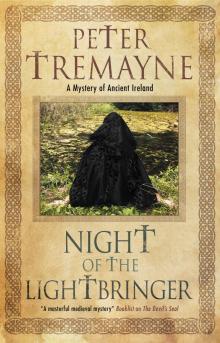 Night of the Lightbringer
Night of the Lightbringer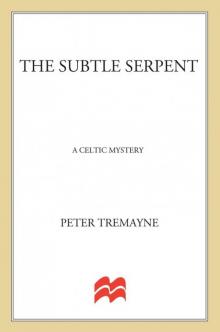 The Subtle Serpent
The Subtle Serpent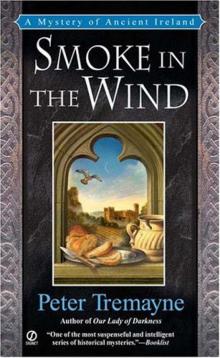 Smoke in the Wind
Smoke in the Wind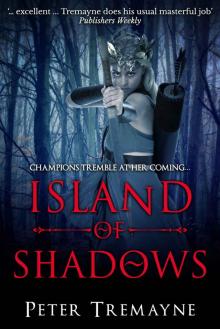 Island of Shadows
Island of Shadows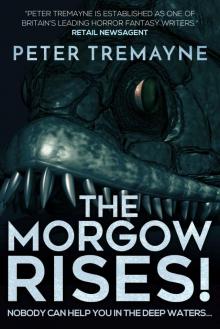 The Morgow Rises!
The Morgow Rises!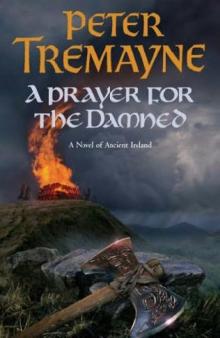 A Prayer for the Damned sf-17
A Prayer for the Damned sf-17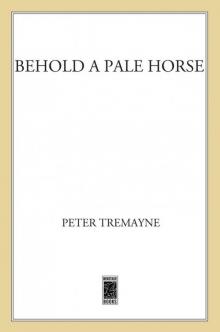 Behold a Pale Horse
Behold a Pale Horse Shroud for the Archbishop
Shroud for the Archbishop The Banshee (sister fidelma)
The Banshee (sister fidelma)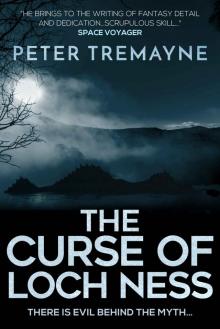 The Curse of Loch Ness
The Curse of Loch Ness Whispers of the Dead
Whispers of the Dead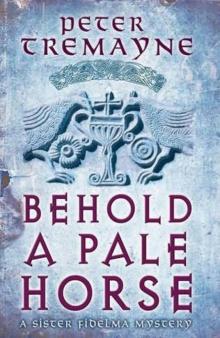 Behold a Pale Horse sf-22
Behold a Pale Horse sf-22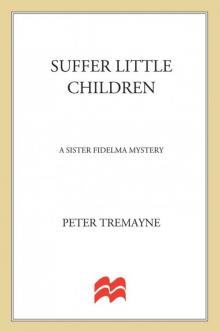 Suffer Little Children
Suffer Little Children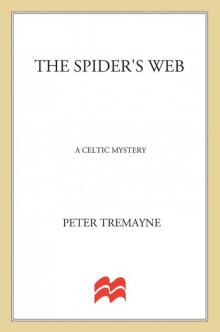 The Spider's Web
The Spider's Web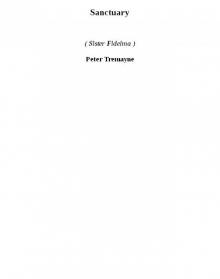 Sanctuary (sister fidelma)
Sanctuary (sister fidelma) Penance of the Damned (Sister Fidelma)
Penance of the Damned (Sister Fidelma)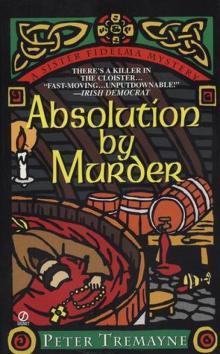 Absolution by Murder
Absolution by Murder A Scream From The Sepulchre
A Scream From The Sepulchre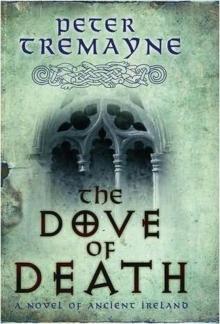 The Dove of Death sf-20
The Dove of Death sf-20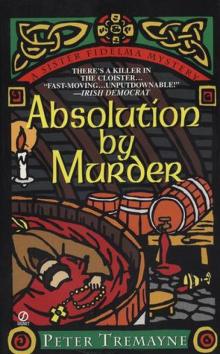 Absolution by Murder sf-1
Absolution by Murder sf-1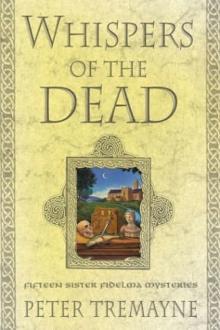 Whispers of the Dead sf-15
Whispers of the Dead sf-15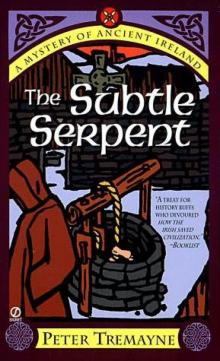 The Subtle Serpent sf-4
The Subtle Serpent sf-4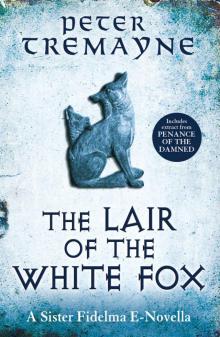 The Lair of the White Fox (e-novella) (Kindle Single)
The Lair of the White Fox (e-novella) (Kindle Single) Badger's Moon sf-13
Badger's Moon sf-13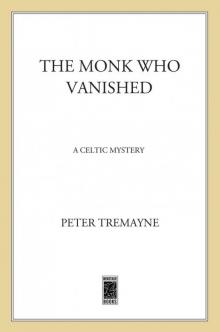 The Monk Who Vanished
The Monk Who Vanished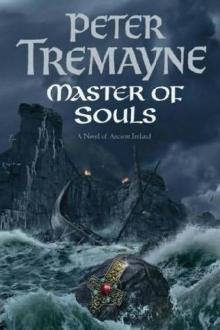 Master of Souls sf-16
Master of Souls sf-16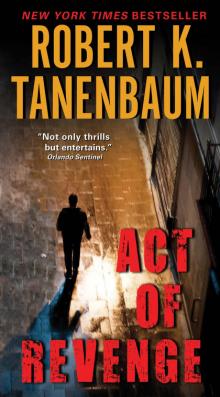 Act of Mercy sf-8
Act of Mercy sf-8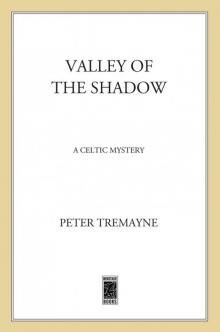 Valley of the Shadow
Valley of the Shadow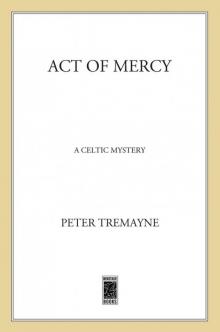 Act of Mercy
Act of Mercy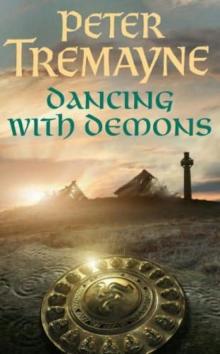 Dancing With Demons sf-18
Dancing With Demons sf-18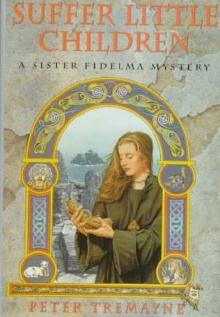 Suffer Little Children sf-3
Suffer Little Children sf-3 The Leper's Bell
The Leper's Bell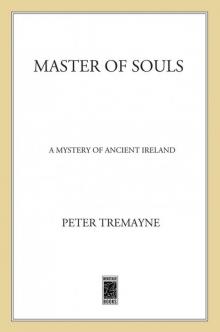 Master of Souls
Master of Souls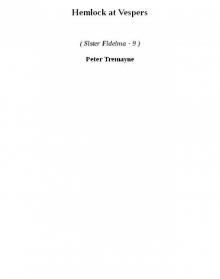 Hemlock at Vespers sf-9
Hemlock at Vespers sf-9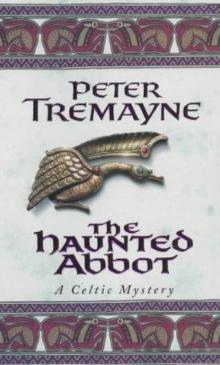 The Haunted Abbot sf-12
The Haunted Abbot sf-12 23- The Seventh Trumpet
23- The Seventh Trumpet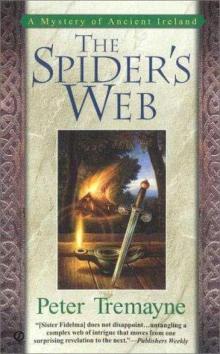 The Spider's Web sf-5
The Spider's Web sf-5 Valley of the Shadow sf-6
Valley of the Shadow sf-6 Bloodmoon
Bloodmoon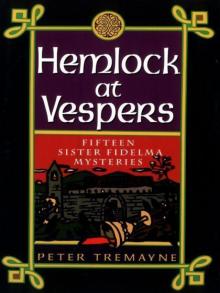 Hemlock at Vespers: Fifteen Sister Fidelma Mysteries
Hemlock at Vespers: Fifteen Sister Fidelma Mysteries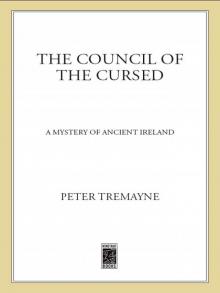 The Council of the Cursed
The Council of the Cursed The Dove of Death
The Dove of Death The Leper's bell sf-14
The Leper's bell sf-14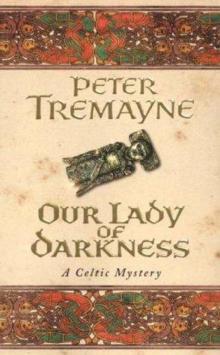 Our Lady of Darkness sf-10
Our Lady of Darkness sf-10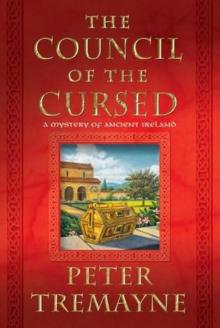 The Council of the Cursed sf-19
The Council of the Cursed sf-19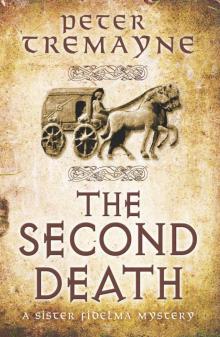 The Second Death (Sister Fidelma Mysteries)
The Second Death (Sister Fidelma Mysteries) The Fiery Devil
The Fiery Devil Dancing With Demons
Dancing With Demons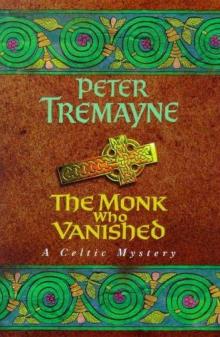 The Monk Who Vanished sf-7
The Monk Who Vanished sf-7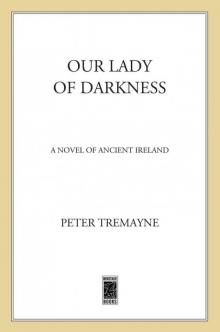 Our Lady of Darkness
Our Lady of Darkness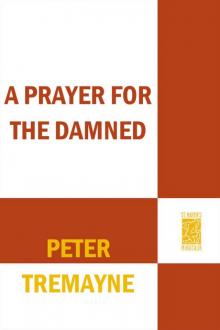 A Prayer for the Damned
A Prayer for the Damned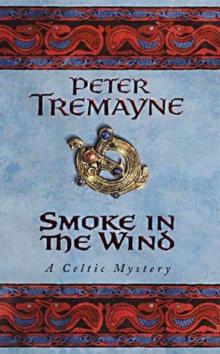 Smoke in the Wind sf-11
Smoke in the Wind sf-11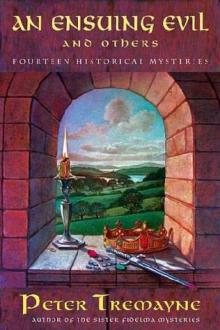 An Ensuing Evil and Others
An Ensuing Evil and Others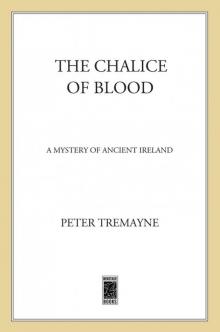 Chalice of Blood
Chalice of Blood